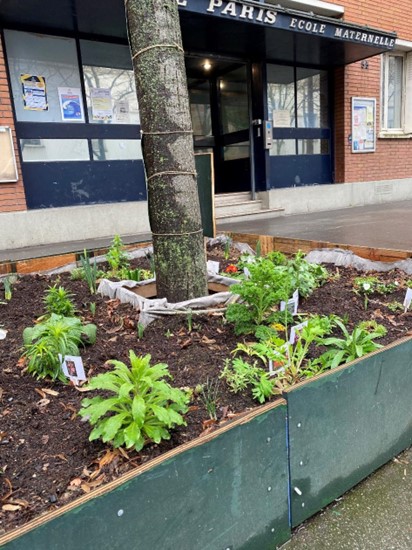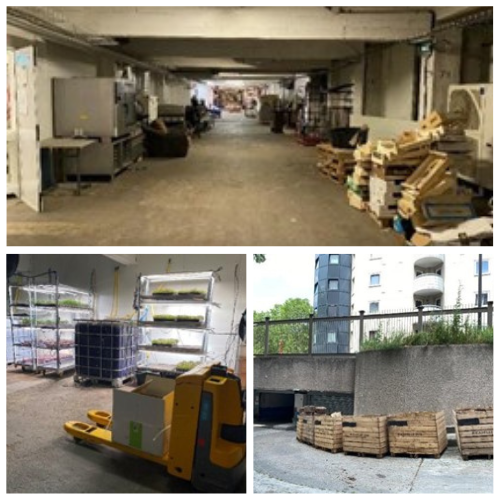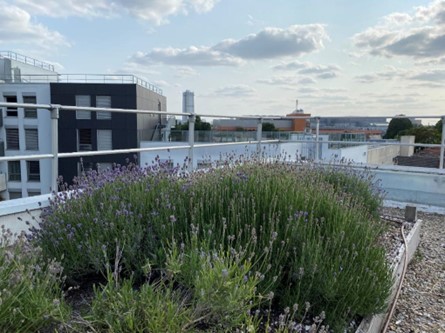By Sheila Doucet, AAWE Paris and Environment Team Co-Chair
Reprinted from AAWE News May/June 2024 with permission of the editor
In a relatively short period of time since the Industrial Revolutions, many countries have experienced significant internal population migrations from rural to urban (and later suburban) settings. In fact, the UN estimates that by the year 2050, a whopping 68% of the world’s population will live in urban areas, up from the 55% tabulated in 2018.
This global increase in the number of city dwellers will not be equally distributed. Migration patterns will reflect each country’s distinct history, pyramid of ages, language and cultural affinities, economic opportunities and government policy responses to transportation, housing and other services provided to its residents.
Given this backdrop, many municipalities, community associations and everyday citizens are motivated to act to address today’s burning issues in anticipation of preparing for tomorrow – and to address a burning question: how will urban populations be fed in the future?
What practices have people already adopted in our own backyards to develop urban agriculture? Last summer I spent time exploring the myriad of possibilities available within my adopted city, Paris. (Paris is particularly affected, as it ranks low among major European cities in terms of poor air quality, heavy traffic and lack of green space.)
School sidewalk garden patches
 Importance? Increasing awareness: pedagogically dispelling the myth for school age urban dwellers that “food comes from the supermarket.”
Importance? Increasing awareness: pedagogically dispelling the myth for school age urban dwellers that “food comes from the supermarket.”
Whether you grew up with access to a backyard garden, on a farm or pitching in with a WWII “victory garden,” you know that the food you eat does not just “come from the supermarket.” Many schools have developed gardens for school-age urban dwellers – some using overlooked square inches such as this one located on the sidewalk itself – to acquaint them with how our food grows and initiate a dialogue around the importance of healthy eating. These small gestures also contribute to supporting biodiversity by providing food sources within city limits.

Repurposed urban spaces: optimizing space while increasing economic benefits to ensure access to fresh food, generate jobs and encourage entrepreneurship
Many people don’t realize that Paris has a long history of agriculture within its city limits, a heritage which slowly slipped away over the course of the 20th century. However, in 2016, the City of Paris initiated a program to expand greenery within the urban landscape and to reintroduce agriculture within city limits as a way to reinforce the city’s resilience to the adverse effects of climate change. Since its inception, its “Parisculteurs” program promotes and finances a dizzying array of non-profits, start-ups and associations, one of which is housed in an abandoned parking lot located under a residential building. Many local residents have found jobs just under their feet, in the North of the city. Today the space – “La Caverne” (The Cavern) – hosts a variety of organic farms specializing in crops ranging from endives and mushrooms to greens, microsprouts and edible flowers. Most are harvested and delivered by bicycle the same day to local merchants, restaurants or markets.

Rooftops
 Have you caught the urban farmer bug? Perhaps you have the option of looking up! This rooftop farm is an example of another recent initiative by the municipal government designed to encourage people to throw their hats into the ring. However, before ordering the flyers announcing your first open house, there are many considerations to bear in mind: does your roof have the structural integrity to support the extra weight of soil, water and plants? How easy is your space to access? How will you ensure a source of water? How intense is the sun exposure? Is there protection from the wind? Do you have permission?
Have you caught the urban farmer bug? Perhaps you have the option of looking up! This rooftop farm is an example of another recent initiative by the municipal government designed to encourage people to throw their hats into the ring. However, before ordering the flyers announcing your first open house, there are many considerations to bear in mind: does your roof have the structural integrity to support the extra weight of soil, water and plants? How easy is your space to access? How will you ensure a source of water? How intense is the sun exposure? Is there protection from the wind? Do you have permission?
“L’Aromathèque” is an example of a group giving it a go. The association operates an urban micro-farm specializing in the cultivation and production of herbal and medicinal teas. Since 2019, it is run by volunteers and a few salaried people who have converted from earlier careers. All herbs are grown in raised beds. If you do decide to cultivate on a Parisian roof, know that you may be allowed to commercialize your produce only if your farm is located above a certain height, due to health concerns raised by contamination from street-level automobile exhaust fumes. This particular farm is located near the Périphérique, a major ring road circling the city, so takes precautions cultivating plants.
Reclaimed train tracks
The affectionately-named “La Petite Ceinture” followed a chaotic history of freight and passenger transportation. Opened in 1852, it eventually circled Paris, allowing for merchandise, freight and limited passenger service. Its decline in many sections coincided with the opening of metro and bus lines. Some sections were used, others were transformed or transferred to the SNCF/ RATP. The question of what to do with such valuable urban real estate emerged. Here is one section found at La Porte de Clignancourt, Paris 18.

Repurposed factory sites
This site, located along the canal de l’Ourcq, one of Paris’s “industrial water highways,” was home to one of France’s largest manufacturers of motorcycles, Motobécane. In its heyday, the site utilized a range of toxic engines, rubber tires, materials (metals, paints, oils and heavy machinery). All that to say: the site has a legacy of toxic wastes which is incompatible with in-soil agriculture. This explains the need to utilize above-ground planters. There is also a dedicated zone where various experiments to restore the ground soil are conducted.

Conclusion
Although motivations may differ – providing solutions to food deserts, increasing biodiversity within city limits, repurposing urban infrastructure, decreasing the “urban heat island effect,” decreasing the distances produce travels between farm and table, reviewing land use policies which drive people from their ancestral lands, addressing the need to develop social inclusion programs, fostering a “closer interaction” with Nature and the source of our food – underlying these actions is the desire to increase the city’s resilience in the face of climatic changes. One feels that a renewed interest in cultivating the urban agricultural landscape is well underway. Let’s support and develop these efforts, shall we?
Resources
“The Paris urban agriculture agenda—Parisculteurs” by Resilient Cities Network, 8 February 2023
United Nations, Department of Economic and Social Affairs – “68% of the world population projected to live in urban areas by 2050, says UN”
Article originally published in the May/June 2024 issue of AAWE News, an AAWE-Paris, bi-monthly publication with permission from editor.
All photos by the author.

